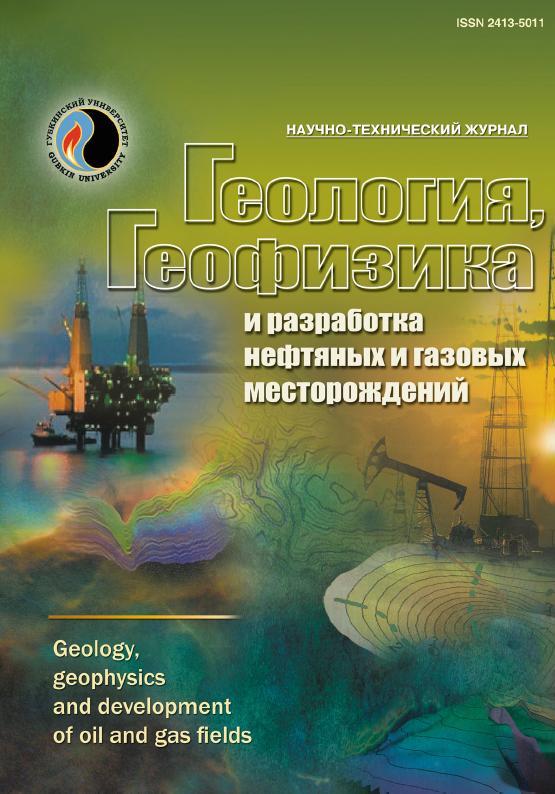Capillary end effects when developing fractured-porous reservoirs
UDC: 622.276.031:532.6
DOI: -
Authors:
SVALOV ALEXANDER M. 1
1
1 Oil and Gas Research Institute Russian Academy of Sciences, Moscow, Russia
Keywords: fractured-porous rocks, carbonate reservoirs, wettability, capillary pressure, end effects
Annotation:
The influence of capillary end effects on the filtration characteristics of fractured-porous rocks and, in particular, carbonate reservoirs has been studied by the author of the article. It has been shown that in hydrophobic reservoirs, which include the majority of carbonate reservoirs, at the late stage of rock blocks water flooding, zones of capillary impregnation of the rock with immobile oil are formed at the exit of the blocks, thus increasing the residual oil saturation of such reservoirs during water flooding.
It has been shown that the formation of zones of rock blocks capillary impregnation reduces their filtration conductivity in comparison with the conductivity caused only by their permeability. It has been revealed that the influence of capillary end effects on the fractured-porous rocks filtration characteristics decreases with displacement pressure gradient increase.
A mechanism has been proposed to explain the pressure abrupt change in the wetting phase at the entrance to a rock block or rock sample of limited size during laboratory studies of two-phase filtration processes. The proposed mechanism assumes the formation of a narrow transition layer with a maximum concentration of the non-wetting phase at the entrance to the rock block, during movement through which a significant loss of pressure occurs in the wetting phase.
The results of the analysis can be used in computer modeling of water-flooding processes in fractured-porous reservoirs.
Bibliography:
1. Barenblatt G.I., Entov V.M., Ryzhik V.M. Dvizhenie zhidkostey i gazov v prirodnykh plastakh. – M.: Nedra, 1984. – 211 s.
2. Golf-Racht T.D. Osnovy neftepromyslovoy geologii i razrabotki treshchinovatykh kollektorov. – M.: Nedra, 1986. – 608 s.
3. Svalov A.M. Osobennosti krivykh pritoka i vosstanovleniya davleniya v treshchinovato-poristykh kollektorakh // Inzhenerno-fizicheskiy zhurnal. – 2021. – T. 94. – № 2. – S. 377–383. – DOI: 10.1007/s10891-021-02307-8
4. Tiab Djebbar, Donal’dson Erl Ch. Petrofizika: teoriya i praktika izucheniya kollektorskikh svoystv gornykh porod i dvizheniya plastovykh flyuidov. – M.: OOO "Premium-Inzhiniring", 2009. – 868 s.
5. Makfi K.A., Rid Dzh., Zubizaretta I. Laboratornye issledovaniya kerna: gid po luchshim praktikam. – M.–Izhevsk: Institut komp’yuternykh issledovaniy, 2018. – 912 s.
6. Gudok N.S., Bogdanovich N.N., Martynov V.G. Opredelenie fizicheskikh svoystv neftevodosoderzhashchikh porod. – M.: Nedra-Biznestsentr, 2007. – 592 s.
7. Svalov A.M. Problemy dobychi nefti i gaza. Kapillyarnye effekty v podzemnoy gidrodinamike: novye rezul’taty. – M.: Knizhnyy dom "Librokom", 2013. – 112 s.

